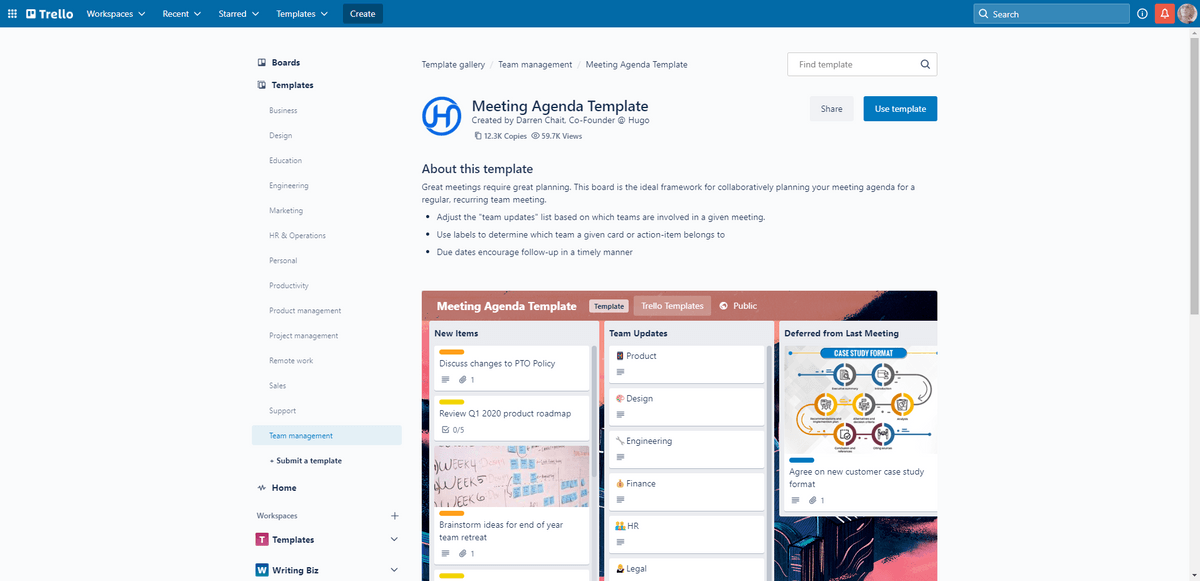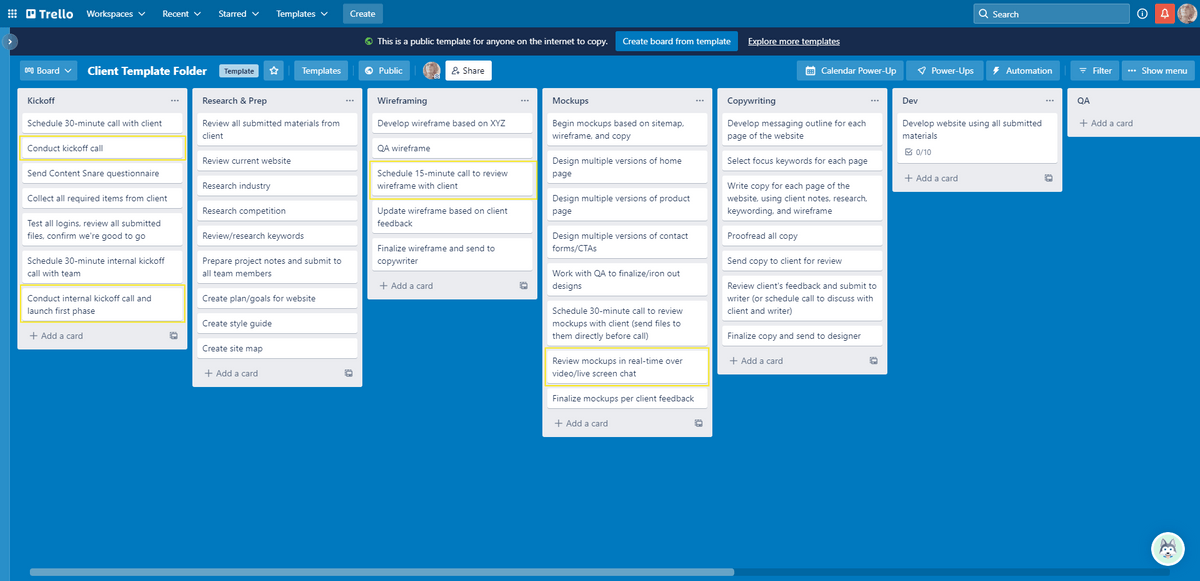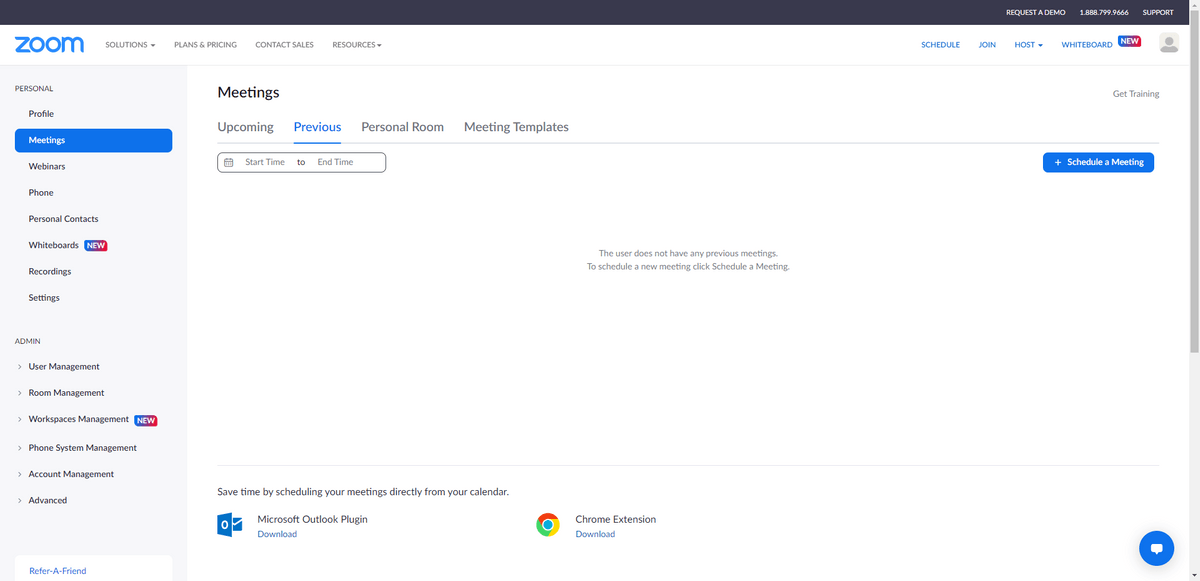6 Tips to Have More Productive Meetings as a Web Designer

Why is it that people dread meetings so much? It’s likely because they view them as a waste of time. To ensure that your web design meetings are a productive use of everyone’s time and can help you get projects done more quickly and effectively, follow these tips.
Most people I know (myself included) dread meetings. That’s because they’re all too often pointless time wasters.
Humorist Dave Barry summed it up well:
“If you had to identify, in one word, the reason why the human race has not achieved, and never will achieve, its full potential, that word would be ‘meetings.’”
While it would be great to work day in and day out without interruption, it’s difficult to do a job like web design without meetings. Since they can’t be avoided, you might as well make the most of the time you spend in them.
In this post, we’re going to look at some ways to do just that.
How to Make Your Project Meetings More Productive
There are certain things you can do as a web designer to ensure that your internal and external meetings are brief, stay on track and produce the desired results.
1. Only Schedule Meetings That Require a Face-to-Face Format
One of the worst feelings is when you show up to a meeting and no one knows where to start or, worse, has nothing to say. This is one of the benefits to creating an agenda for every meeting you have.
An agenda forces you to list out the objective of the meeting and the points to be covered. After spelling everything out, you might realize that a meeting isn’t needed at all. If you can easily get done in an email what you were planning to devote 60 minutes to, then the only time “wasted” was the time spent writing up the agenda.
According to research from Zippia, 55% of people who work remotely believe that most meetings can be resolved with an email.
So never feel as though you need to go through with a meeting just because you scheduled a time or created an agenda for it. Just cancel it and go with the quicker resolution route. Everyone involved will be glad you did.
2. Always Create an Agenda Ahead of Time
Another benefit of creating an agenda is that, when you do go ahead with a meeting, you have a structured plan for it.
By setting a single, clear objective for the meeting, you can shut down excessive chitchat and other deviations from the topic at hand. All you’ll need to do is remind attendees of what you came to work on in order to redirect the conversation and get everyone focused again.
An agenda also makes it easy for you to determine priorities for your meeting. Let’s say you have a list of items you need to get from the client before work on their app can begin. This needs to be addressed in addition to everything else you wanted to do during your onboarding call.
Prioritize the meeting’s topics so that everything that needs to be resolved today gets resolved. The rest can be rescheduled for another meeting or dealt with in future emails.
What’s more, an agenda gives you something tangible to work off of. You should send it to attendees ahead of time so they know what to expect and can come prepared.
In addition, the agenda can be used to summarize the meeting, what was accomplished, as well as what the action items are and who the accountable parties are. Documenting every step of the process—even meetings—is critical, so the agenda lessens the amount of work you have to do to create that piece of documentation.
There’s something else that can help you create meeting agendas.
Do a search through your project management tool’s templates. Most of them have a collection—either ones they’ve created or that users have generated. If you don’t know where they are, just do a search on Google for “[name of the tool] meeting agenda template.”
Trello, for instance, has user-generated templates like these that provide a good jumping-off point for designing your own template:

What’s more, they’re easy to import into your own system. By making the agenda and checklist digitized, everyone will have ready access to the meeting’s notes, to-dos and so on.
3. Build Meetings into Project Timelines
Speaking of transparency and setting expectations, it’s a good practice to plot out your meetings in your project timeline.
For example, this is a project template I quickly threw together that outlines the very basic phases and steps of a small web design project:

The ones outlined in yellow are the cards I created specifically for internal team meetings and meetings with clients.
This is exactly what I did for the web design agency I used to work at—every process was templatized and every template included placeholders for the meetings that occurred along the way. Just as the digitized process ensured that we never missed a step, it also ensured that meetings stayed on everyone’s radar.
We knew exactly when they were coming up and could prepare for them.
Also, if you loop your clients into your project management workflow, you can tag them on these cards so they have visibility into when meetings are scheduled. This will give them a progress checkpoint to look forward to. They can come prepared with questions instead of clogging up your email inbox with them.
4. Only Allow Essential People to Attend
I can’t tell you how many times over the years I’ve hopped into a meeting only to discover that extra people were invited. What’s worse, I usually would find this out because they showed up first and I had no idea who they were … or they showed up late and the client would ask me to wait for them.
The issue isn’t really that it’s inconvenient. It’s that having too many cooks in the kitchen—and then throwing in some waitstaff, cleaning crew and random passersby—is going to seriously hamper any progress you planned for your meeting and project.
Older research suggests that the ideal number of meeting attendees is four to six people, with 10 as the cap. More recent insights on meeting productivity suggest that no more than seven people should ever attend a meeting.
Depending on the scope of the product you’re building, you might not have more than a few people to invite. That said, that doesn’t make it OK for clients, managers or anyone else to add more attendees simply because you didn’t hit the Magic 7.
One of the reasons why meetings stay on track is because everyone there is on the same page. They know what’s being worked on, they understand the meeting objective and they don’t need things spelled out. Progress can’t be made if you’re having to backtrack and explain the scope of the job, the issue that’s being resolved, etc.
What’s more, attendees should have an actual stake in the outcome. For you as a web designer, you want to create the best product you can—for your client and for your reputation. For your client, they need a product that will help them establish a digital presence in the world and to sell whatever it is they’re offering.
Outsiders are there just to stir the pot. There’s nothing they’re putting at risk by disrupting progress or asking bad questions.
In my experience, clients and (internal) management tend to be the ones the most guilty of this meeting faux pas. To reduce the likelihood of this happening, talk to your client at the very start of the job about the importance of meetings.
Stress the value of those meetings for them. Then explain that only essential team members are asked to attend in order to be respectful of everyone’s time and input. If you make it be all about them and how they benefit from it, they’ll hopefully be respectful of your request.
5. Host the Meetings Over a Video Conferencing Platform if You Can’t Meet in Person
There are a number of reasons why you want to meet face-to-face with your attendees.
For starters, people can’t tune out what’s being discussed or to try and multi-task. According to Zippia, 55% of employees have reported checking emails while they’re in meetings.
If they’re on a video screen or meeting in person, it’s going to be difficult for anyone to do that. This will force meeting attendees to be engaged during the meeting—to really listen, ask questions and contribute to the meeting objective.
One thing you can do to encourage engagement and participation is to make your meetings feel like conversations, not like lectures or presentations. Even if that’s what they are. If everyone is forced to just sit and listen for 30 to 60 minutes, their attention is going to wane.
Another reason why live or in person meetings are best is because they tend to be visually driven.
As technologist Tom Wujec said:
“We are visual creatures. When you doodle an image that captures the essence of an idea, you not only remember it, but you also help other people understand and act on it—which is generally the point of meetings in the first place.”
Meetings enable you to use visual aids—like whiteboards, project management timelines and digital checklists. They also enable you to walk through the progress you’re making on wireframes, prototypes and branding together.
By including visuals in your meetings, everyone involved is more likely to be engaged throughout. Feedback will also be more constructive as they’ll have something concrete to focus on.
6. Be a Stickler About Time
That stat I just mentioned about 55% of people checking their emails during meetings? It happens more frequently the longer a meeting lasts.
In order to keep things on track, you’re going to have to pay close attention to the timing of everything.
For starters, do you know how long each meeting will take throughout your web design process? If you’re not sure, look back at your time tracking data. If you haven’t been tracking time, you can also look at your video conferencing records.
I know that a platform like Zoom keeps track of previous meetings and how long they were:

If you haven’t tracked any data on this yet, that’s OK. Start keeping tabs on things going forward. Every meeting should be timed. You can then use averages to set limits on how long future meetings last.
Here are some other ways you can be a stickler about time:
- Never schedule meetings for Monday mornings or Friday afternoons.
- For anything that’s going to take longer than 60 minutes, break it up into multiple meetings.
- If attendees are more than 10 minutes late, cancel and reschedule for a later date.
- Have something concrete scheduled for the end time of your meeting so that it can’t run over.
This will make attending meetings—and getting there on time and out early—more attractive for all those involved. It will also ensure that they last only for as long as they have to.
Wrap-up
Meetings are rarely any fun in the web design world. But here’s the thing: If you go into meetings with a negative mindset and feeling stressed out, it can lead to a poor outcome. In other words, nothing gets done and then you have to schedule another meeting to deal with it.
To keep yourself, your team and your clients on track during meetings, there are some simple tips to follow. Using software that everyone has access to, creating actionable agendas and making your conversations engaging will all contribute to more productive and fruitful meetings overall.

Suzanne Scacca
A former project manager and web design agency manager, Suzanne Scacca now writes about the changing landscape of design, development and software.

